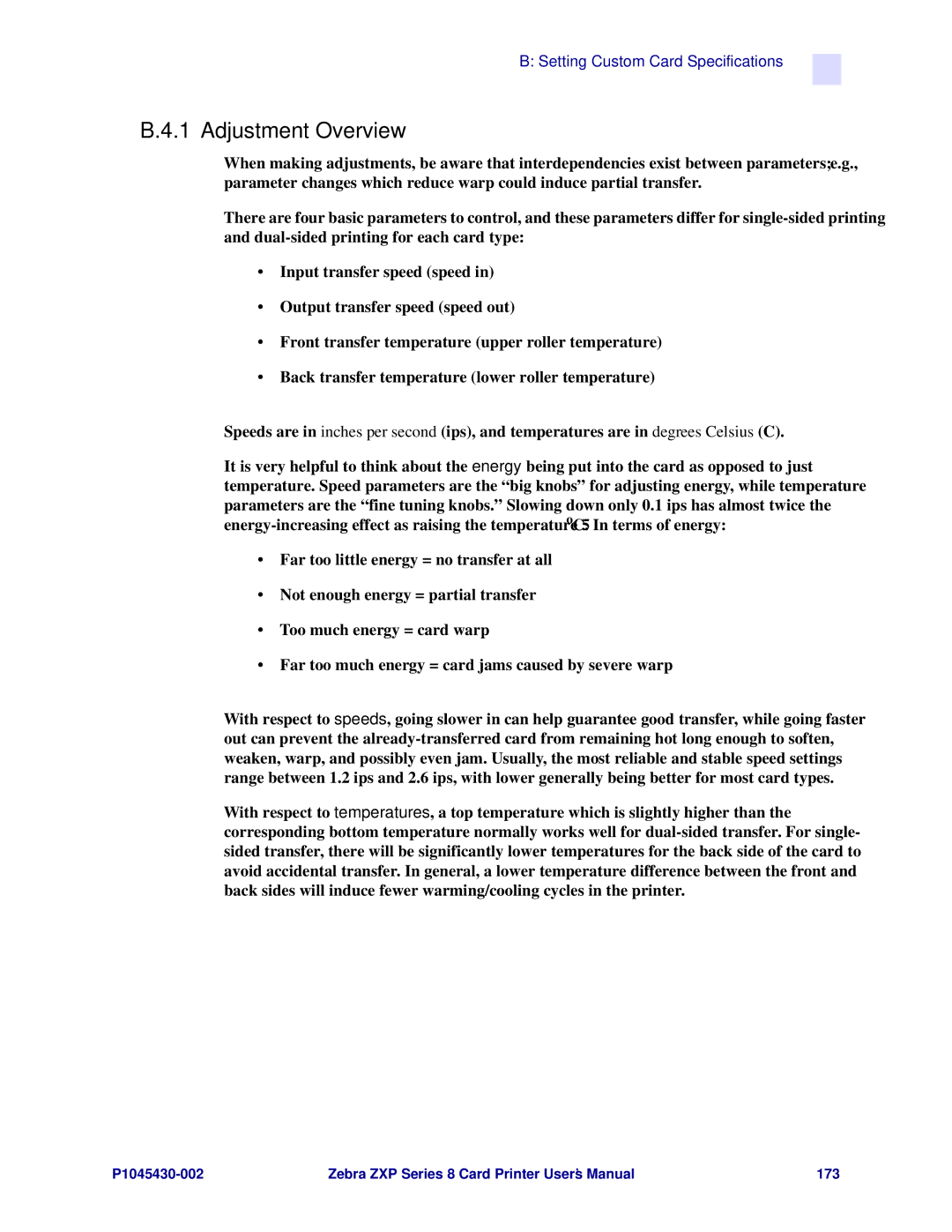B: Setting Custom Card Specifications ![]()
B.4.1 Adjustment Overview
When making adjustments, be aware that interdependencies exist between parameters; e.g., parameter changes which reduce warp could induce partial transfer.
There are four basic parameters to control, and these parameters differ for
•Input transfer speed (speed in)
•Output transfer speed (speed out)
•Front transfer temperature (upper roller temperature)
•Back transfer temperature (lower roller temperature)
Speeds are in inches per second (ips), and temperatures are in degrees Celsius (C).
It is very helpful to think about the energy being put into the card as opposed to just temperature. Speed parameters are the “big knobs” for adjusting energy, while temperature parameters are the “fine tuning knobs.” Slowing down only 0.1 ips has almost twice the
•Far too little energy = no transfer at all
•Not enough energy = partial transfer
•Too much energy = card warp
•Far too much energy = card jams caused by severe warp
With respect to speeds, going slower in can help guarantee good transfer, while going faster out can prevent the
With respect to temperatures, a top temperature which is slightly higher than the corresponding bottom temperature normally works well for
Zebra ZXP Series 8 Card Printer User’s Manual | 173 |
